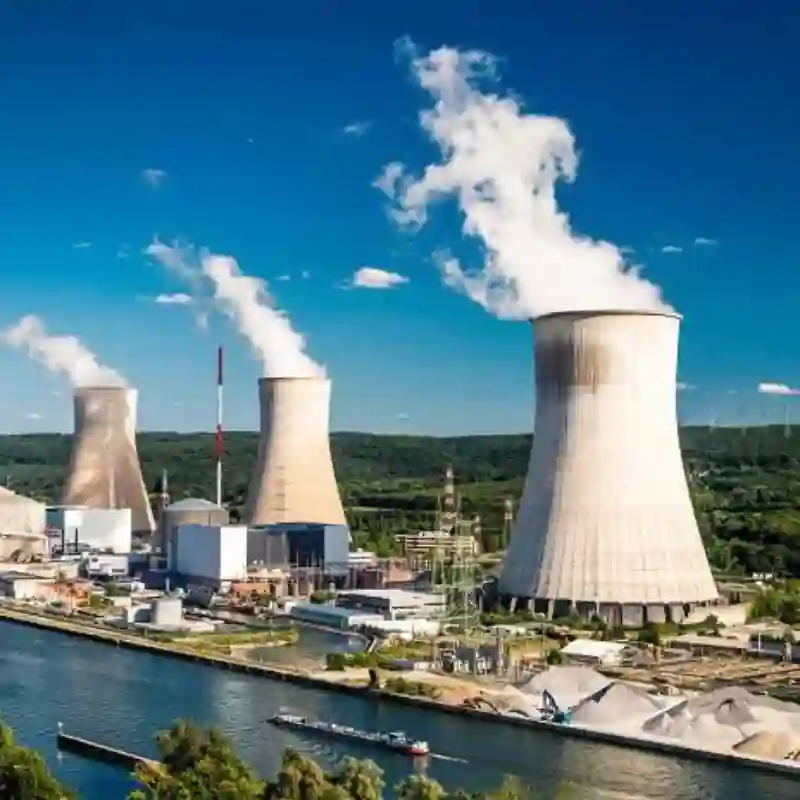Hebei Messi Biology Co., Ltd. said that Japan was the first in the world to use magnesium oxide and magnesium hydroxide wet methods for flue gas desulfurization. By the early 1990s, dozens of units had been put into operation. Because magnesium oxide and magnesium hydroxide desulfurization has many advantages such as advanced technology, reasonable economy, easy maintenance and repair of the equipment, safe and reliable continuous operation, no gypsum scaling, magnesium sulfate by-product, recycling or pollution discharge, etc., Japanese companies race to develop this technology.
With the increasing number of magnesium oxide and magnesium hydroxide desulfurization devices, the annual consumption of slurry magnesium hydroxide in the field of flue gas desulfurization in the past 20 years is about 700,000 to 800,000 tons, equivalent to 180,000 to 200,000 tons of light-burned oxidation magnesium. On the other hand, it also promotes the development and production of Japanese slurry magnesium hydroxide products. Japan’s total magnesium hydroxide production increased from 440,000 tons (dry basis) in 1996 to 496,000 tons in 1999, while the magnesium hydroxide used for flue gas desulfurization was 163,000 tons and 268,000 tons respectively. The former accounted for It accounts for 37.1% of the total, with the latter accounting for 54.0%. It is the country with the largest scale and largest consumption of magnesium oxide and magnesium hydroxide desulfurization abroad.
The characteristics of magnesium oxide and magnesium hydroxide desulfurization are simple process, compact equipment, lower investment and construction costs than the calcium method, easy handling of magnesium agent materials, and safe and reliable continuous operation. The dust removal efficiency of the desulfurization device installed in the shipyard in Japan is 85.7%~94.8%, and the desulfurization rate is 94.4%~99.2%. In the discharged wastewater, COD (4~25) mg/L, suspended solids (2~16) mg/L , pH value 5.9~7.6.
The magnesium oxide and magnesium hydroxide wet flue gas desulfurization process has been increasingly perfected through continuous improvement and innovation. It is very effective in terms of desulfurization efficiency, dust removal efficiency, operating characteristics and wastewater treatment. The COD, SS, and PH values in the wastewater treatment project all meet environmental protection requirements. The continuous absorption and oxidation operations in the new magnesium agent desulfurization process are more economical and reasonable than staged absorption and oxidation, and can meet the needs of different users. In short, due to the technical and economic superiority of magnesium oxide and magnesium hydroxide desulfurization and the continuous deepening of research and development work, this process is still under continuous development and innovation in Japan.
In the United States, flue gas desulfurization is one of the consumption areas of magnesium hydroxide. The American magnesium oxide and magnesium hydroxide desulfurization equipment has been in operation for many years, and its characteristic is that the magnesium agent is recycled and reused. The dolomitic lime desulfurization device has also been put into operation for many years, and the desulfurization product is converted into magnesium hydroxide for sale as a commodity. South Korea has focused on studying the functional characteristics of various gas-liquid absorption devices in the magnesium agent desulfurization process, and the desulfurization rate in a type of circular two-flow tray absorber (COFT) reaches more than 95%. Recently, the magnesium agent wet flue gas desulfurization process developed by Poland has been successful and widely used in thermal power plants. Magnesium oxide and magnesium hydroxide desulfurization wet desulfurization is a process with considerable economic and environmental advantages, which can replace lime to achieve waste-free operation. Between 1990 and 2000, 10 units were installed in Poland, with unit capacities ranging from 5MW to 92MW. After 2000, multiple units were put into operation. The operation results show that magnesium agent desulfurization provides better technical parameters and produces high-quality magnesium sulfate fertilizer as a by-product. Through optimized combination, this process has been used in large power plants, and can improve the efficiency of thermal power plants and reduce operating costs.
Hebei Messi Biology Co., Ltd. stated that in China, Shandong Laizhou magnesite and other foreign mines are used to prepare slurry magnesium hydroxide desulfurizer on-site in coal-fired power plants to meet the needs of flue gas desulfurization in power plants, but how to dispose of sulfuric acid Magnesium unknown. It is also planned to use light-burned magnesium oxide for flue gas desulfurization operations in Shengli Oilfield power plants.

